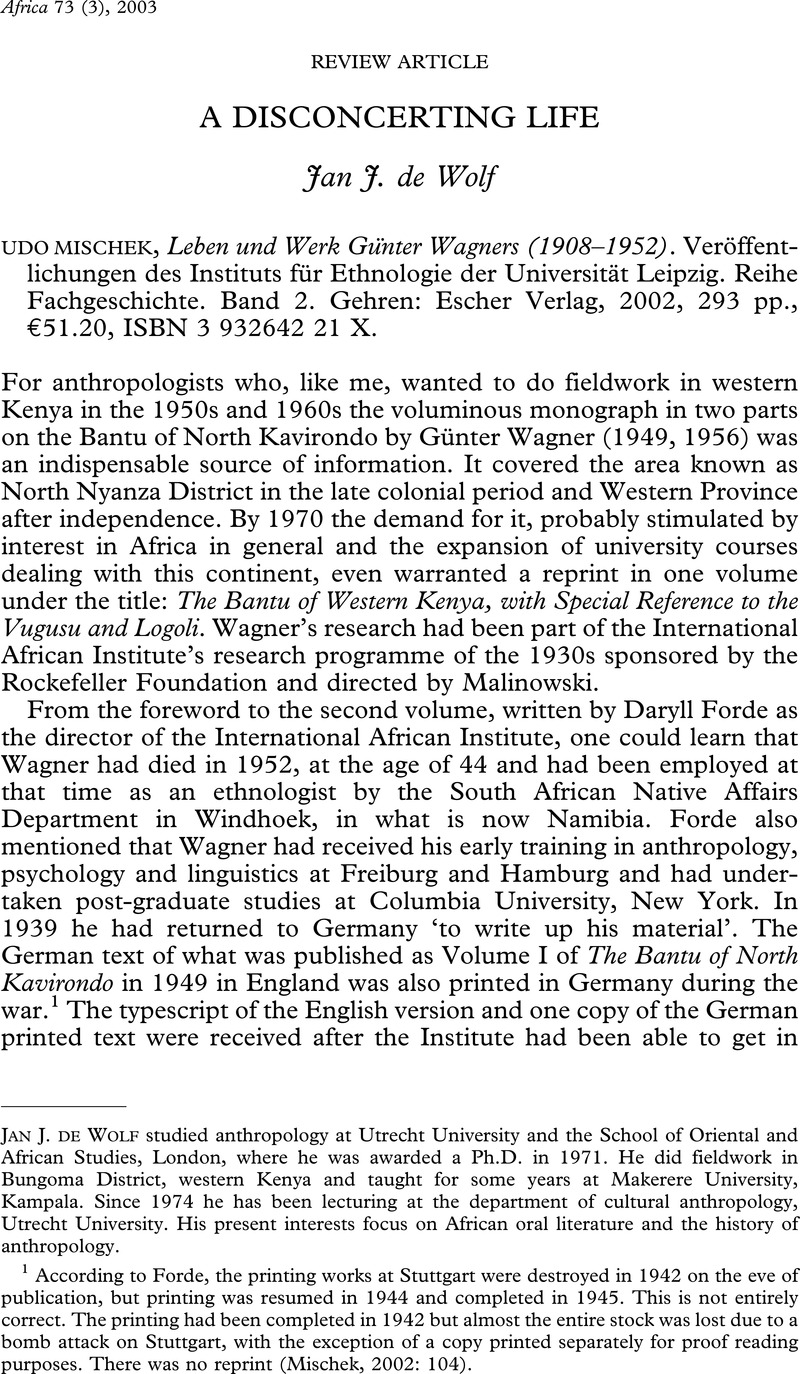Wagner, G. 1956.
The Bantu of North Kavirondo. Volume II. Economic Life. London: Oxford University Press, for the International African Institute. Reprinted with Volume I in one volume, 1970.
The Bantu of Western Kenya: with special reference to the Vugusu and Logoli. London:
Oxford University Press, for the International African Institute.
Google Scholar 